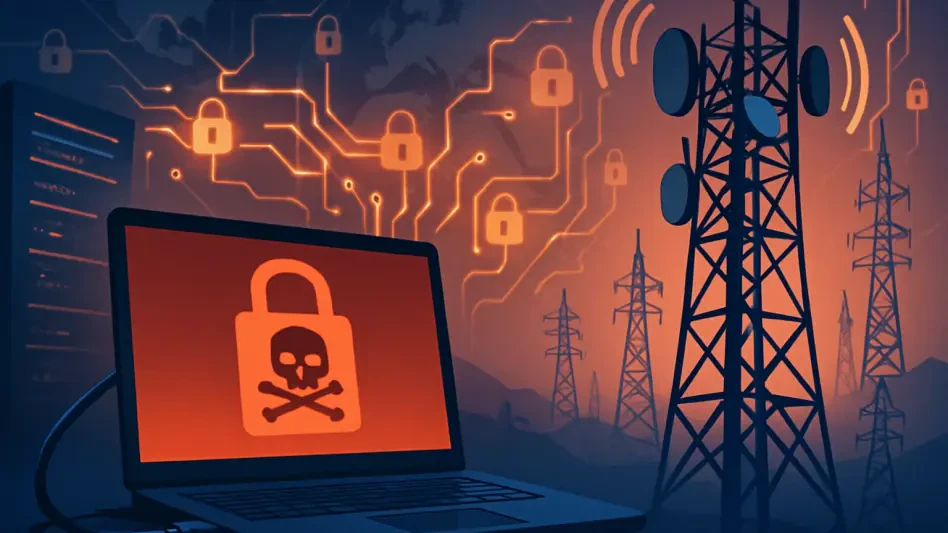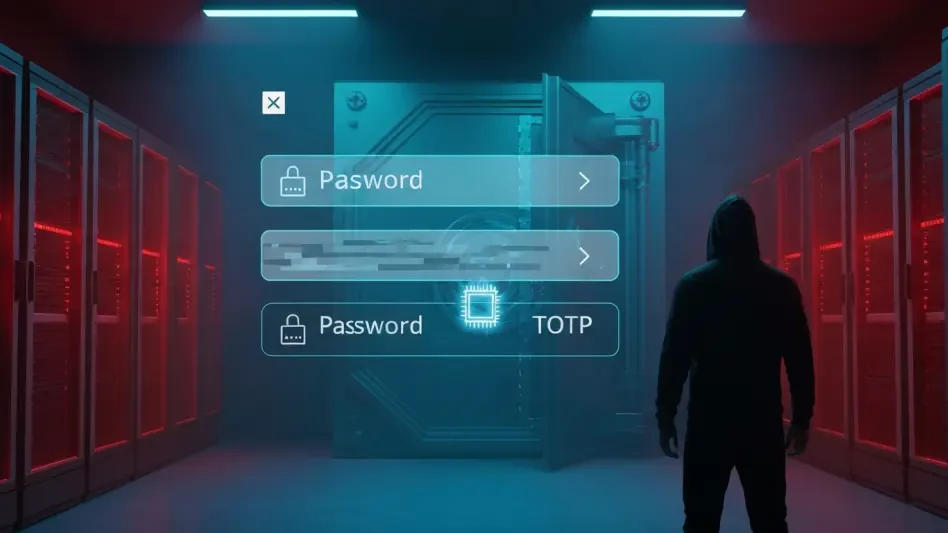In an era where digital threats loom larger than ever, a major telecommunications provider faced a severe test of resilience when a ransomware attack struck on August 12 of this year, compromising sensitive customer data. This incident, targeting Colt Technology Services, a key player in global connectivity, sent shockwaves through the industry as cybercriminals infiltrated business support systems and leaked file titles on dark web forums to pressure the company into paying a ransom. While customer-facing networks remained unscathed, the breach exposed the vulnerability of operational systems and raised critical questions about cybersecurity preparedness in critical sectors. The response to this crisis offers a compelling case study in managing high-stakes cyber incidents, showcasing how swift action and strategic planning can mitigate damage even under intense pressure. This article delves into the details of the attack, the immediate steps taken, and the broader lessons for businesses navigating an increasingly hostile digital landscape.
Unveiling the Cyber Incident
Initial Detection and Impact Assessment
At approximately 11:00 AM BST on August 12, Colt Technology Services detected unusual activity within its business support systems, marking the beginning of a significant ransomware attack that would challenge the company’s operational integrity. Immediate activation of a major incident response protocol followed, with external forensic investigators brought on board to evaluate the extent of the breach. The attackers had exfiltrated sensitive files, and as a coercive tactic, document titles surfaced on dark web platforms, amplifying the urgency of the situation. A crucial aspect of this early stage was the decision to isolate affected systems from customer infrastructure, ensuring that core network services remained operational. While this segregation protected critical customer-facing functions, it became evident that the breach had infiltrated vital support mechanisms, necessitating a deeper investigation into how such access was gained and what data had been compromised during the initial intrusion.
Operational Disruptions and Containment Efforts
As the scope of the ransomware attack unfolded, Colt Technology Services made the tough call to disable several key systems to prevent further unauthorized access, highlighting the delicate balance between security and service continuity. Platforms such as the Colt Online customer portal, Number Hosting APIs, Colt On Demand Network-as-a-Service platform, and Voice On Demand services were temporarily shut down, disrupting automated processes and slowing response times to customer inquiries. Additionally, the ability to place new service orders was halted as a precautionary measure. These actions, while necessary to contain the breach, underscored the cascading effects of cyberattacks on business operations, even when customer networks remain secure. The company’s focus during this phase was on limiting the attackers’ reach, a move that, though disruptive, aimed to safeguard long-term trust by prioritizing the protection of sensitive data over immediate operational convenience.
Strategies for Recovery and Resilience
Transparent Communication and Customer Support
In the wake of the ransomware attack, Colt Technology Services placed a strong emphasis on transparency, swiftly establishing a dedicated call center to assist customers in determining whether their data had been compromised in the breach. Notifications were also sent to the UK’s National Cyber Security Centre (NCSC) and relevant law enforcement agencies, ensuring compliance with regulatory obligations and accessing external expertise to bolster their response. Support channels via phone and email were maintained across regions like the UK, France, and Germany, providing a lifeline for clients amidst the operational disruptions. This commitment to open communication helped mitigate uncertainty, as customers were kept informed about the status of the investigation and the steps being taken to secure their information. Such transparency not only addressed immediate concerns but also reinforced confidence in the company’s handling of the crisis during a vulnerable period.
Strengthening Defenses and Long-Term Mitigation
Beyond immediate response measures, Colt Technology Services implemented enhanced security protocols to fortify its infrastructure against future threats following the ransomware incident. Upgraded access controls, improved detection mechanisms, and increased visibility into system activities were rolled out to address vulnerabilities exposed by the attack. Specialist third-party teams worked tirelessly to uncover the full extent of the data breach, ensuring no stone was left unturned in the forensic analysis. These efforts reflected a proactive stance on cybersecurity, acknowledging that ransomware tactics are growing more sophisticated and targeting critical sectors like telecommunications with alarming frequency. By investing in robust safeguards and collaborating with external experts, the company aimed to rebuild operational stability while setting a precedent for how large enterprises can adapt to evolving cyber risks in a digital-first world.
Lessons Learned from a Digital Crisis
Industry-Wide Implications of Ransomware Trends
Reflecting on the ransomware attack that struck Colt Technology Services, it became clear that the incident mirrored a broader trend of cybercriminals employing advanced tactics to target major corporations, particularly in essential industries. The strategy of publishing stolen data on the dark web to pressure victims into paying ransoms has become a hallmark of modern cybercrime, exposing the urgent need for heightened data security measures. This event highlighted how even segregated system architectures, while effective in protecting customer networks, cannot fully shield operational platforms from determined attackers. The growing sophistication of these threats calls for industry-wide collaboration and the adoption of best practices in incident management, as seen in Colt’s approach to containment and regulatory engagement. Such incidents serve as a reminder that no organization is immune, pushing businesses to prioritize cybersecurity as a core component of their operational strategy.
Building a Resilient Future After the Breach
Looking back, the response of Colt Technology Services to the ransomware attack demonstrated a structured approach that balanced immediate containment with long-term recovery, setting an example for others in the sector. The temporary shutdown of critical systems, while disruptive, proved essential in halting further damage, and the forensic investigations provided valuable insights into the breach’s origins. Moving forward, enterprises must consider investing in advanced threat detection tools and employee training to preempt similar incidents. Additionally, fostering partnerships with cybersecurity authorities can enhance response capabilities when crises emerge. As the digital landscape continues to evolve, adopting a proactive mindset—through regular system audits and updated defense mechanisms—will be crucial in safeguarding sensitive data. This incident ultimately emphasized that resilience is not just about surviving an attack, but about emerging stronger with actionable strategies to prevent future vulnerabilities.








